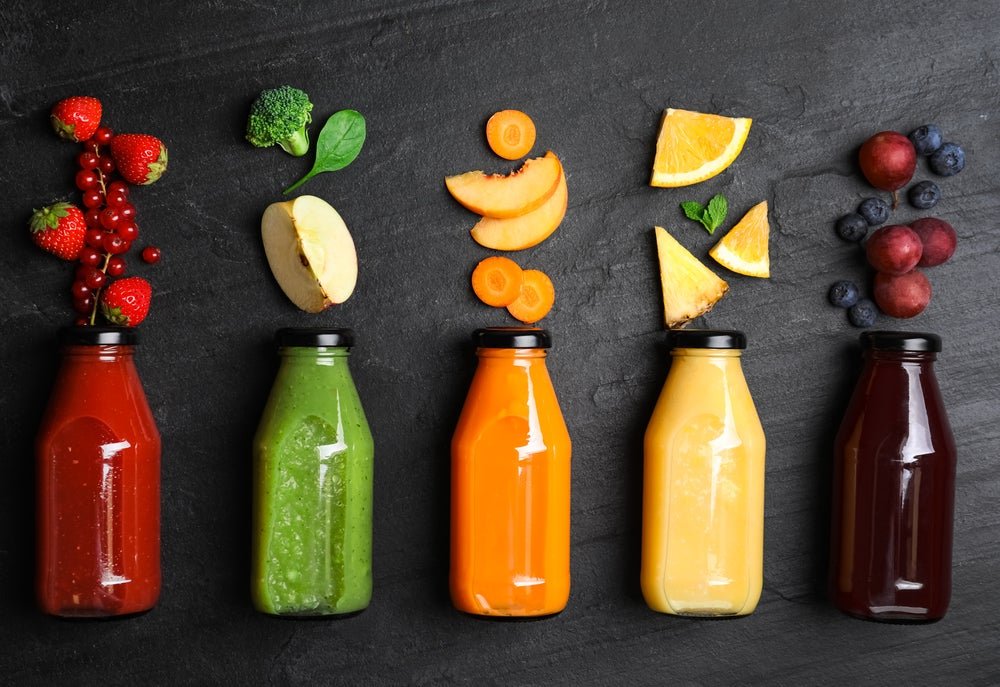
[ad_1]
Do juice cleanses and treadmills mix? Indeed, they may, but I’d warn you in advance of potential fatigue. As with all things, it’s all about the how as opposed to the what. The key is whether you do it right. As a former editor with the Journal of the Academy of Nutrition and Dietetics and a competitive bodybuilder, I’ve seen evidence from all sides. I’d have to say most health professionals roll their eyes at juicing programs, but there do remain devoted practitioners and equally credentialed supporters too. Again, it’s all about picking the right recipes and adhering to a healthy program.
To its credit though, one of the many studies affirming the potential benefits include this one published in the journal Scientific Reports, in which participants in a structured juice cleansing program demonstrated significant improvements in their intestinal microbiota, weight loss, nitric oxide, and oxidation indices. When I read studies like this, the first thing I notice is that the juicing program was well-designed and adhered to. When coaching clients on weight loss for bodybuilding competitions, I find the same thing to be true about diets in general.

Juicing cleanses and treadmills can make a solid combination if you plan. Photo by TreadmillReviews.net
What is a Juice Cleanse?
In case you’re new to the conversation, performing a juice cleanse does not mean you live off regular, commercial fruit juice you buy at the grocery and nothing else. I think the biggest problem people have here, and the reason so many fail at juicing, is they think they can just drink sugary fruit and vegetable drinks from the store. When I perform a juice cleanse, I pre-determine a set number of days over which I will only consume these specially made juices and vitamins for the purpose of flushing my system. To that degree, it’s like a fast. During a juice cleanse you’ll cut out all caffeine, nicotine, and whole foods, with the goal of eliminating the processed and ultra-processed foods, preservatives, and other additives. It’s a liquid diet comprised of juice that specifically designed for this purpose.
You can buy pre-packaged juice cleansing programs online, and there’s tons of them all with different goals. The common denominator is they’re designed to cleanse the system, but many offer weight loss benefits as well. You can understand how easy it is to lose raw poundage by only drinking six to eight bottles of juice per day. Obviously, you can’t live on liquid the rest of your life, so no sane person will suggest this is a strategy for permanent weight loss. But if you’re looking to kick off a weight loss program, or perhaps use it to smash through a plateau, it’s been proven to work.
What Are Potential Downsides to a Juice Cleanse?
Several. Always consult a medical doctor or Registered Dietitian Nutritionist (RDN) if you have any ongoing health issues. This is especially true if you’re on prescription medications which might negatively interact with different foods. Studies have demonstrated that grapefruit juice, for instance is known to negatively interact with a number of medications and medical treatments. You’ll also need to protect against dehydration while eliminating sodium from your body and relying on nothing but liquids. Also, keep in mind, you’re probably going to be short of some amino acids and protein in general during this exercise, so heavy lifting or exercise isn’t recommended.
To that extent, be careful while working out on a treadmill during this process. During a juice cleanse, you’ll only be drinking the prescribed juices and water and this means you’ll start to feel sluggish if you exert yourself, which is exactly what you’re doing on a treadmill.
If you consider the medical research on the topic of cleansing, it’s a mixed bag for sure. The Academy of Nutrition and Dietetics (AND) recommends people consult with an RDN in advance. That said, In the trial outlined here we see 20 otherwise healthy adults consumed only prepared juices for three days followed by 14 days of a customary diet. The results of the study include the proportion of phylum firmicutes and proteobacteria in the stool was significantly decreased, while Bacteroidetes and Cyanobacteria was increased. Plasa and urine nitric oxide were also increased significantly and the urinary lipid peroxidation market malondialdehyde was decreased.
So, when done right, juicing can work. So, here’s the catch. The participants were in a controlled environment and adhered to a safe plan. They were also otherwise healthy at the start. The side effects of juicing are typically fatigue, headaches, dehydration, and irritability. And in some cases, these can be extreme. In my own personal experience, I know this is because I went from having several cups of coffee throughout the day to zero. People who suffer from obesity will also feel these effects sharply at the onset. In all likelihood, you’ll be cutting daily caloric intake during this process. Again, be sure to check with a medical professional if you have any concerns. I’d also recommend not juicing right before or after running a marathon. It’s a fast and should be approached as such.
Do Treadmills and Juice Cleanses Mix?
When you buy into a juice cleaning program, you’ll select the number of days you want. This could be anywhere from one day to a week or so. If you’re doing a one-day cleanse I doubt you’ll feel much fatigue or dehydration. The longer the program the less likely you’ll be wanting to do marathon training. But there’s no question most people use treadmills to cut weight and so combining these programs is a no-brainer. As with anything, be mindful of your own energy levels when exercising, and if you feel like you’re low on energy or fluids you might want to cut back a bit and be mindful of the process. Below are some juice cleanses designed specifically for weight loss and cardio.

[ad_2]
Source link






